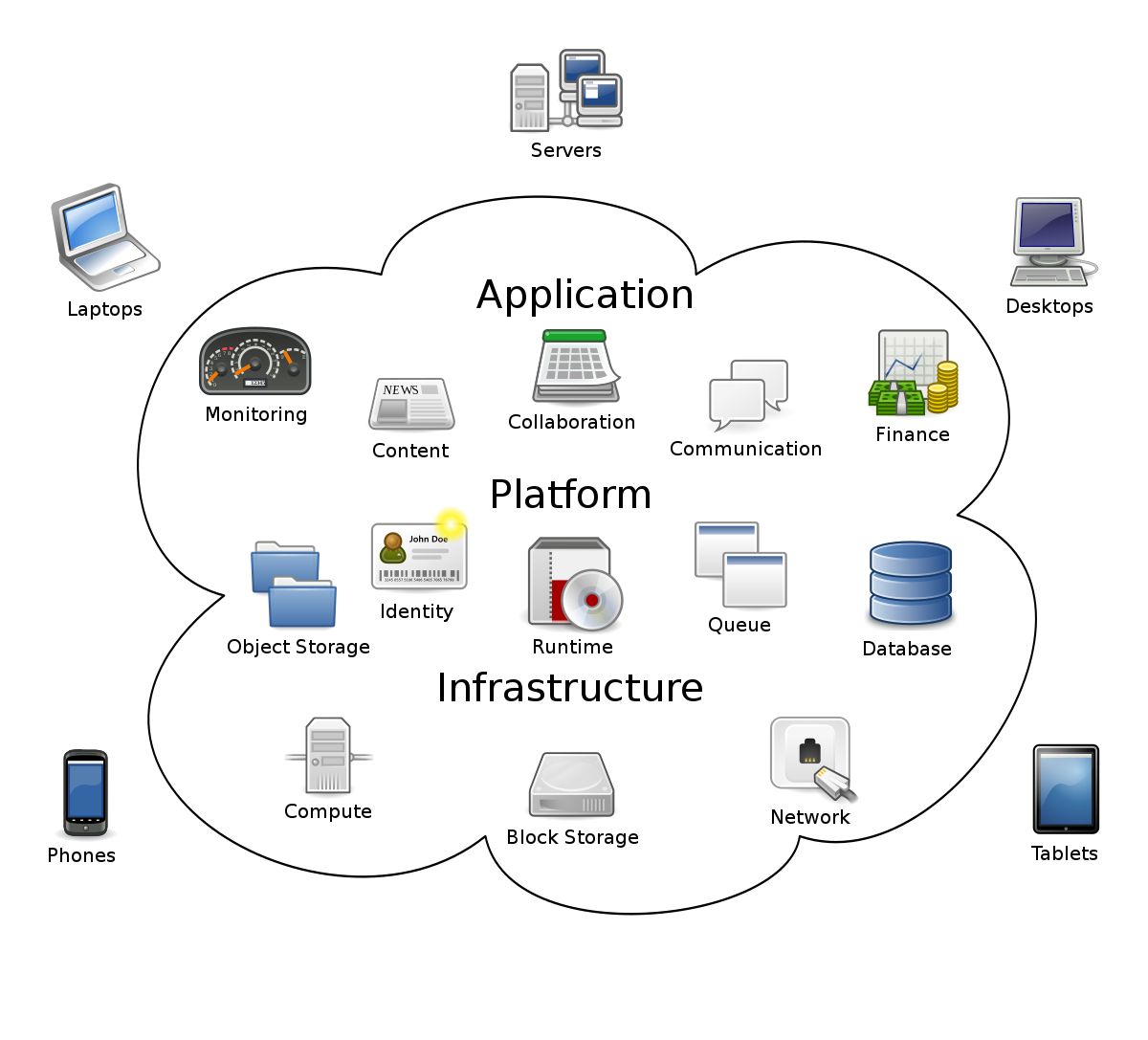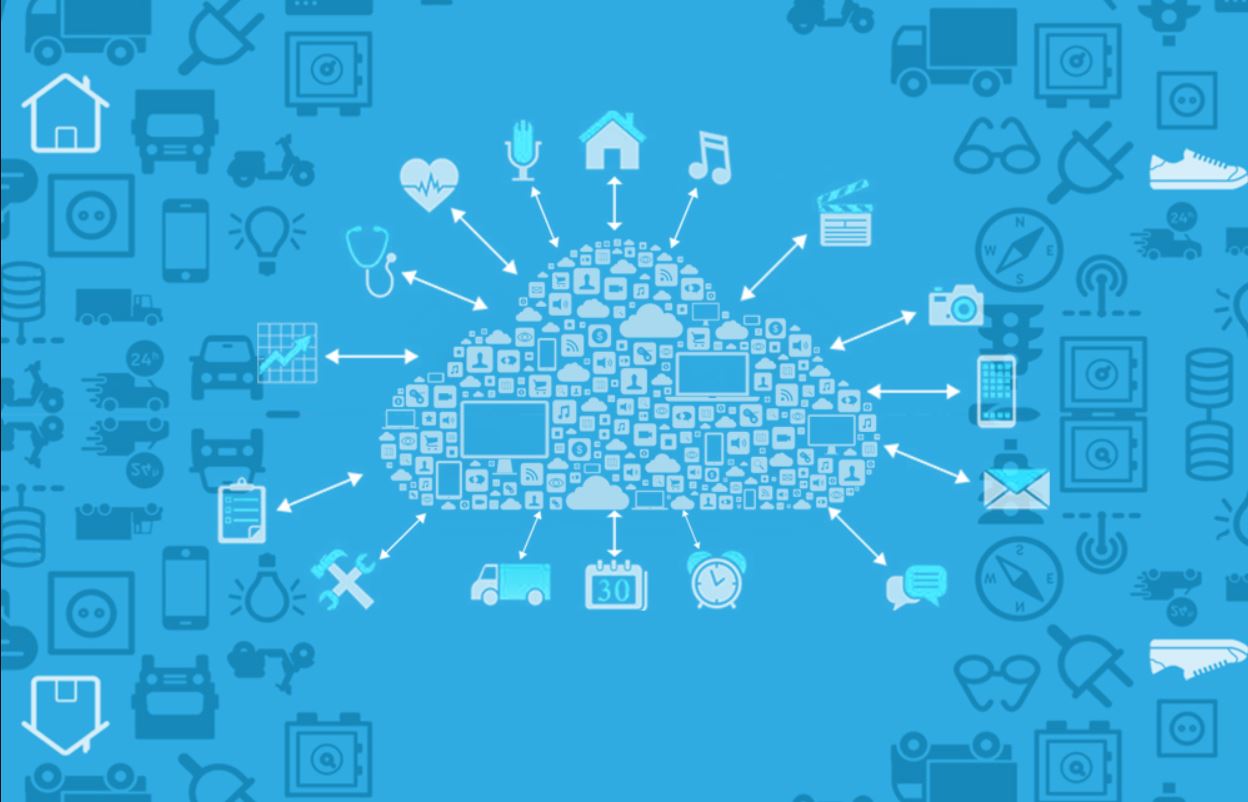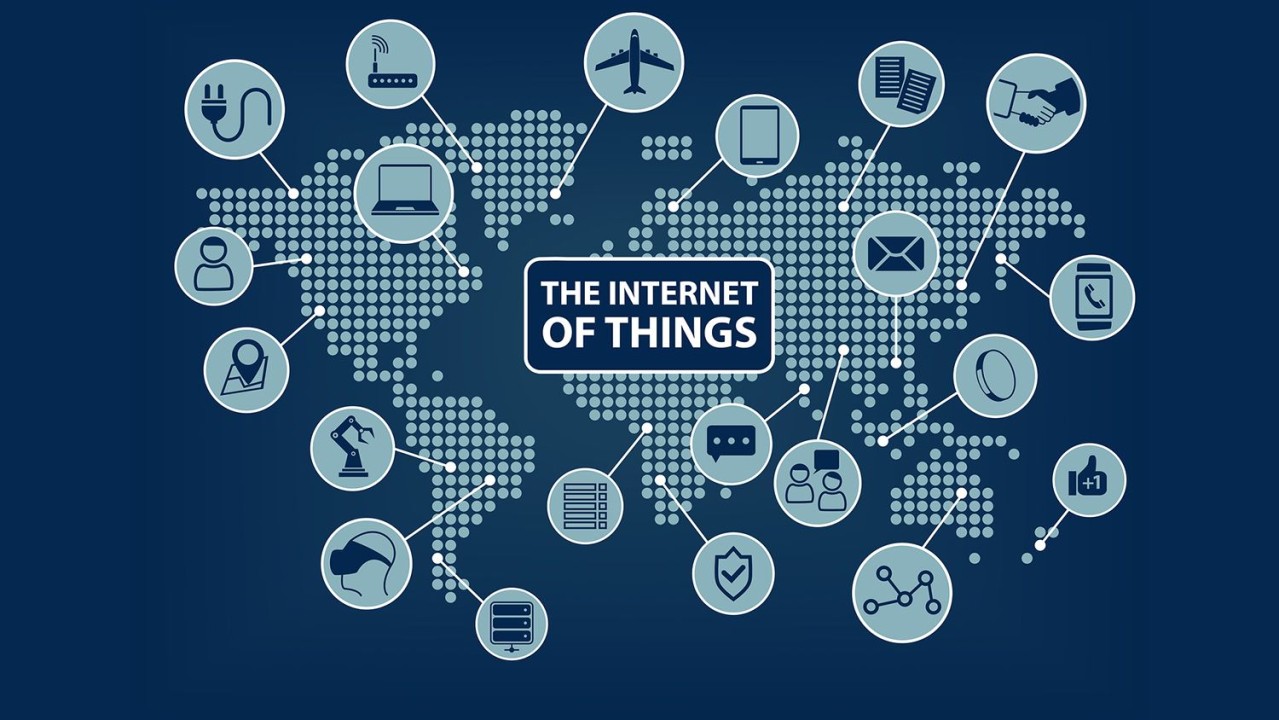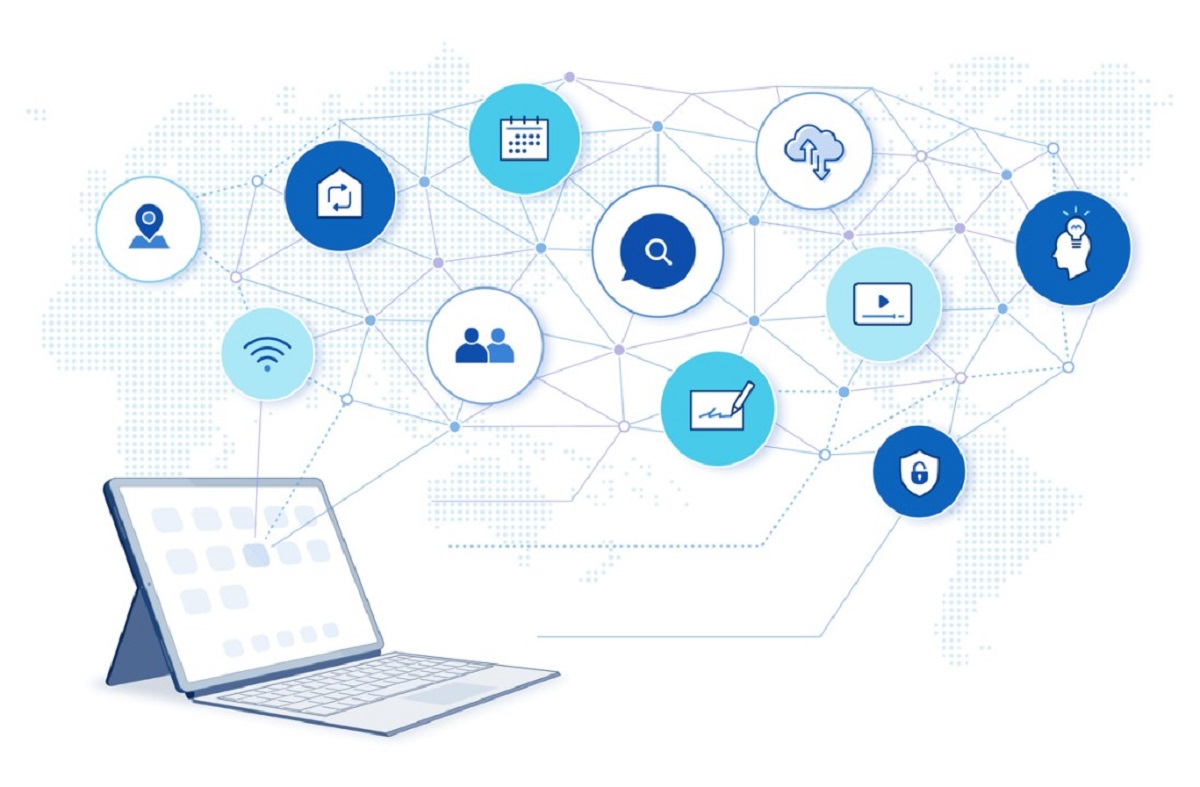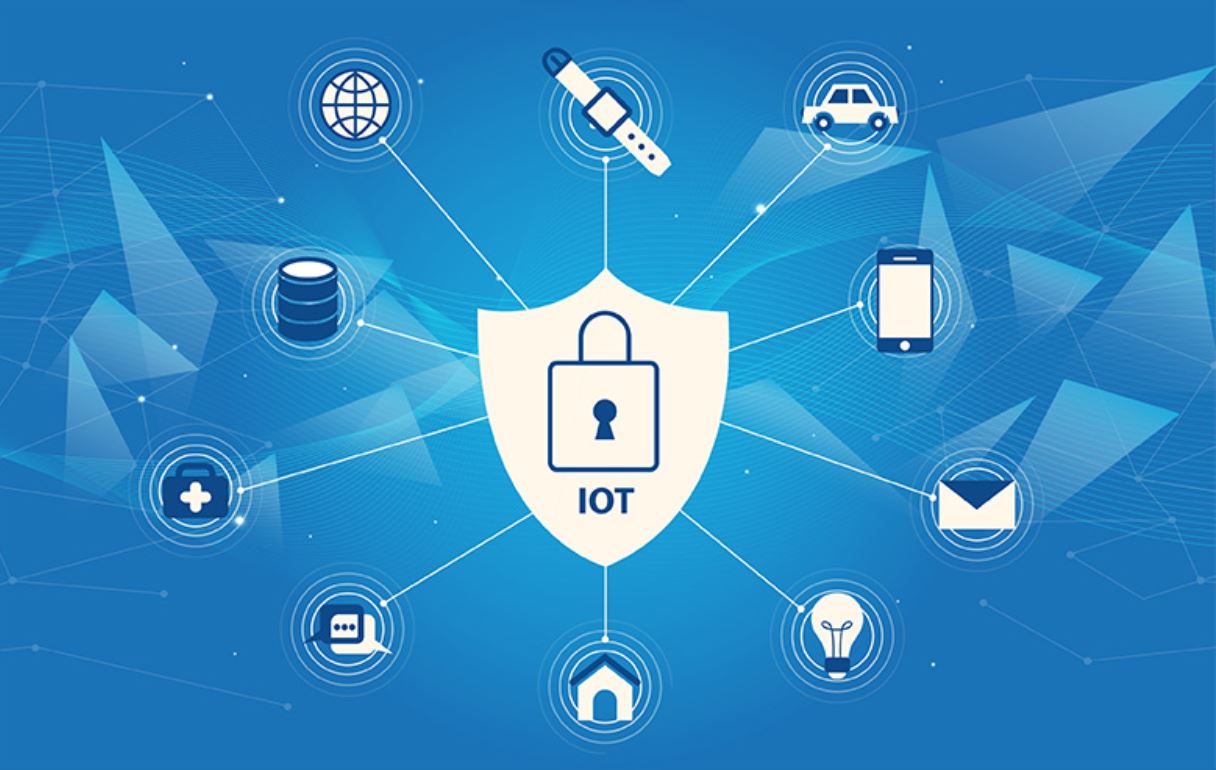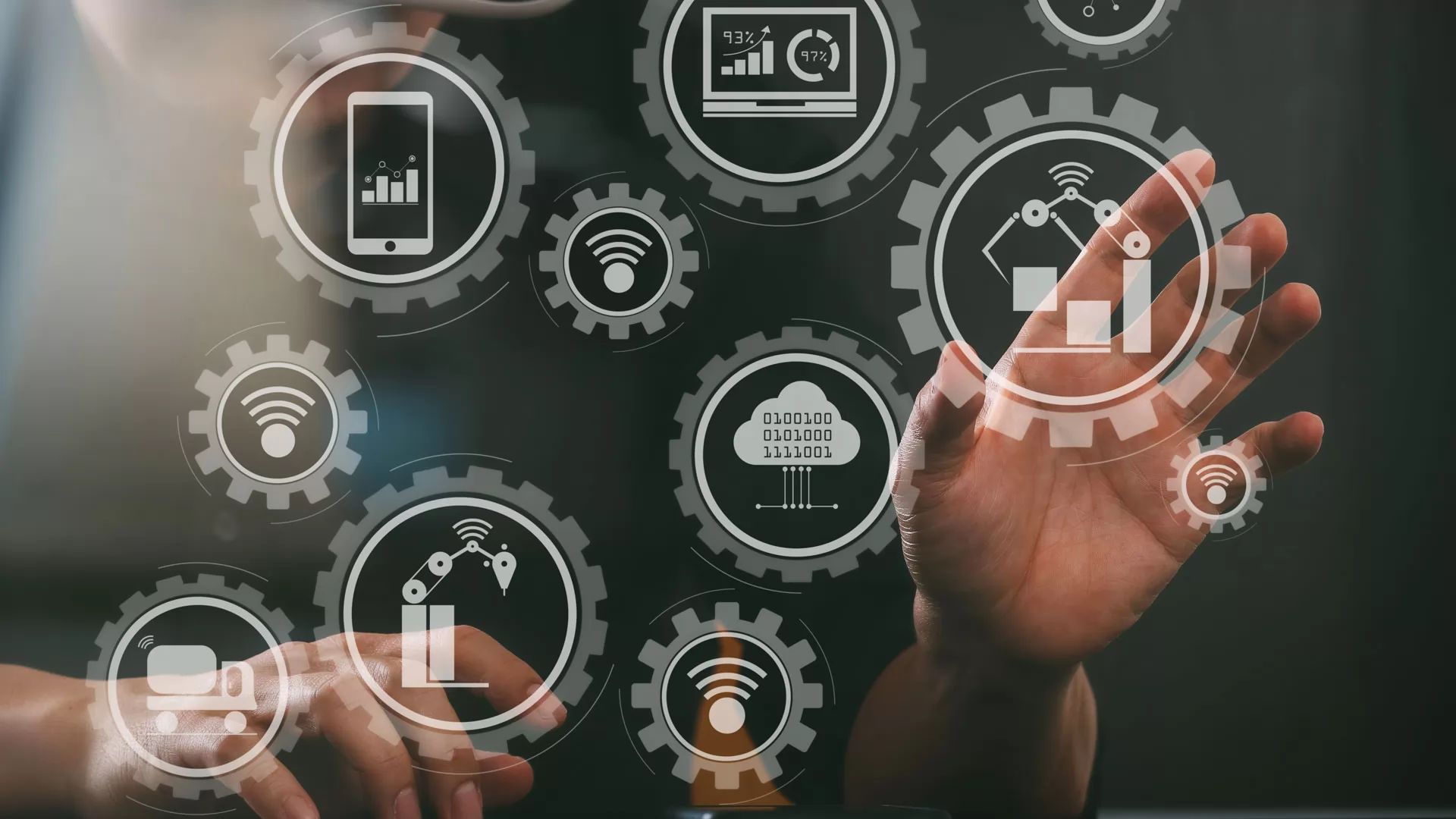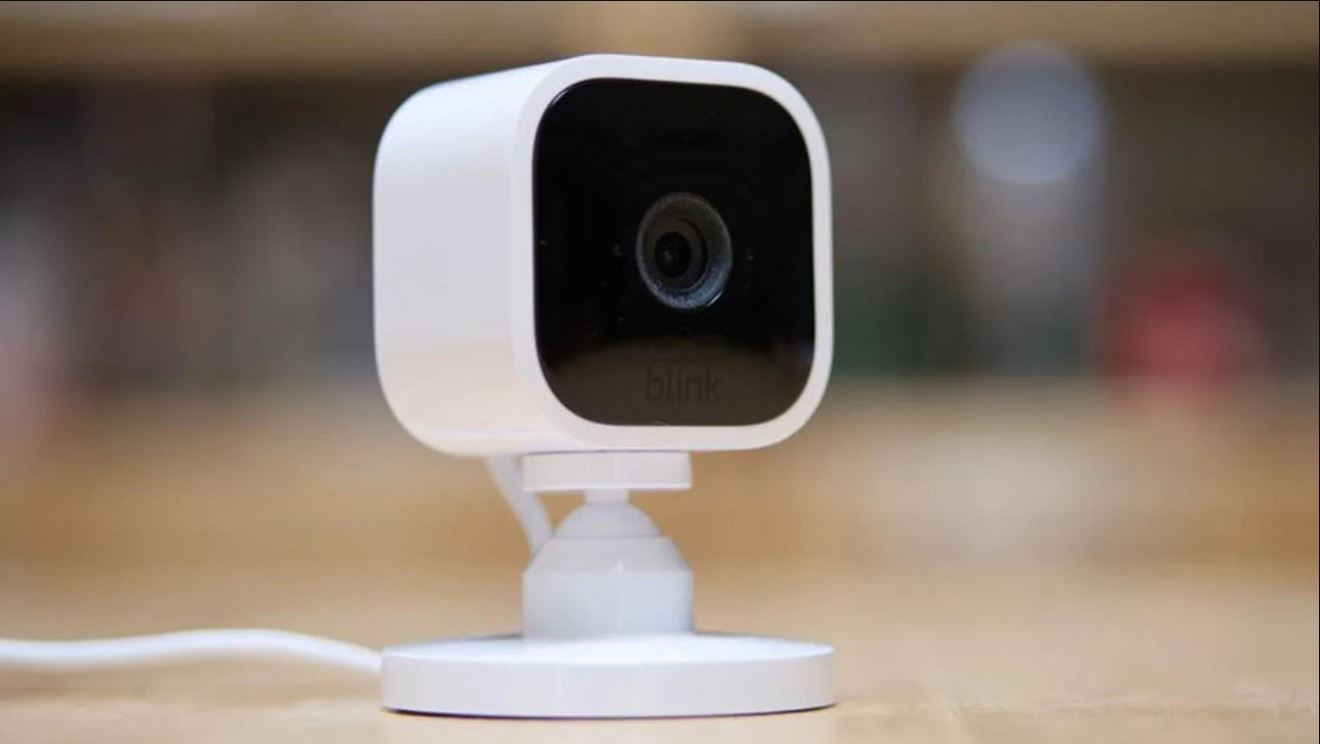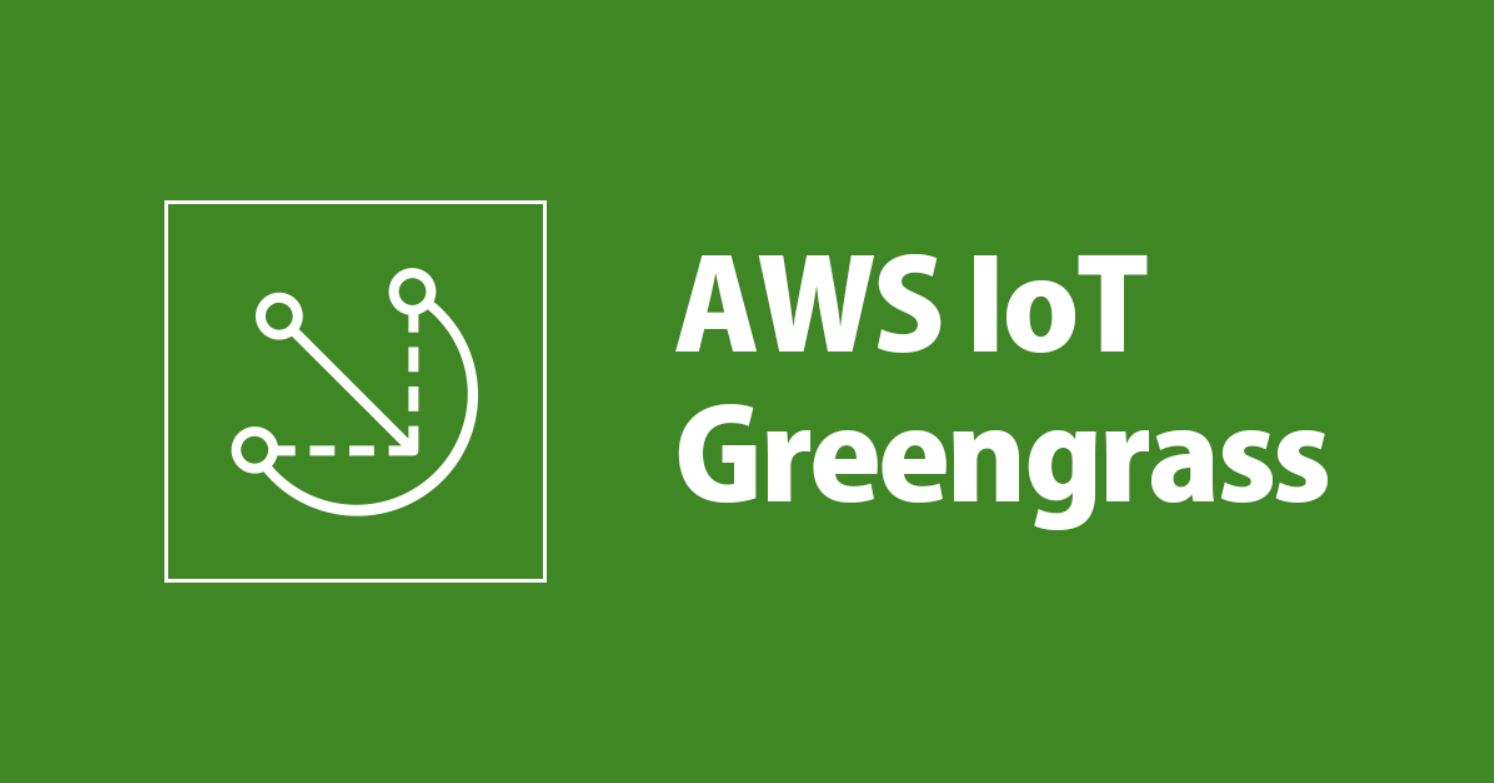Introduction
Cloud computing has revolutionized the way businesses and individuals store, manage, and access data and services. Its impact reaches even further with the rise of Internet of Things (IoT) devices, which have become increasingly popular in various industries. The combination of cloud computing and IoT devices has opened up a whole new realm of possibilities, allowing for seamless connectivity, real-time data analysis, and enhanced efficiency.
But what exactly is cloud computing? In simple terms, it refers to the use of remote servers accessed through the internet to store, manage, and process data. Instead of keeping data on a local computer or server, cloud computing enables users to access their information from anywhere, at any time, using a variety of devices.
IoT devices, on the other hand, are physical objects equipped with sensors, software, and connectivity capabilities that enable them to collect and exchange data over the internet. These devices span a wide range of industries and applications, from smart home appliances and wearables to industrial machinery and healthcare devices.
The relationship between cloud computing and IoT devices is symbiotic, with each complementing and enhancing the other. Cloud computing provides the infrastructure, storage, and processing power needed for IoT devices to function efficiently and effectively.
In this article, we will explore the benefits of cloud computing for IoT devices and delve into real-world use cases that showcase the power of this combination. From improved connectivity and scalability to real-time analytics and enhanced security, the potential of cloud computing for IoT devices is vast and transformative.
What is Cloud Computing?
Cloud computing refers to the delivery of computing services, including storage, databases, software, and analytics, over the internet. Instead of relying on local servers or personal computing devices, cloud computing allows users to access these resources remotely, on-demand, and with flexibility.
One of the key characteristics of cloud computing is its scalability. Cloud service providers have the capability to scale resources up or down based on the needs of their users. This means that businesses can easily accommodate fluctuations in demand, whether it’s during peak hours or seasonal spikes.
Another essential aspect of cloud computing is the pay-as-you-go model. Users only pay for the resources they actually use, eliminating the need for large upfront investments in hardware or infrastructure. This can significantly reduce costs for businesses, especially smaller organizations that may not have the financial resources to purchase and maintain their own servers.
Cloud computing also offers the advantage of remote access. As long as there is an internet connection, users can access their data and applications from anywhere in the world. This level of flexibility enables remote work arrangements and collaboration across teams and organizations, fostering productivity and efficiency.
In addition to these benefits, cloud computing provides high levels of reliability and security. Cloud service providers have extensive backup and disaster recovery measures in place, ensuring that data is not lost in the event of hardware failures or natural disasters. Furthermore, these providers implement robust security measures to protect data from unauthorized access or breaches.
Overall, cloud computing has become an integral part of modern business operations. Its flexibility, scalability, cost-effectiveness, and security make it a viable solution for organizations of all sizes and industries. By leveraging the power of the cloud, businesses can focus on their core competencies and leave the technical infrastructure to reliable and specialized service providers.
How Does Cloud Computing Work?
Cloud computing operates on a distributed computing model, where resources and services are provided over a network, typically the internet. The infrastructure for cloud computing consists of data centers that house servers, storage systems, networking equipment, and other hardware components.
When a user accesses cloud services, their requests are routed to the appropriate data center, where the required resources are allocated. The user’s data and applications are stored and processed on these remote servers, rather than on their local devices or servers.
Cloud computing relies on virtualization technology to maximize resource utilization and provide flexibility. Virtualization allows multiple virtual machines (VMs) to run on a single physical server, effectively dividing and isolating resources. This enables efficient allocation of computing power, storage, and memory to meet the needs of different users and applications.
The three primary service models in cloud computing are:
- Infrastructure as a Service (IaaS): This model provides virtualized computing resources, such as virtual machines, storage, and networking, to users over the internet. Users have full control over the operating systems, applications, and configurations within the virtual environment.
- Platform as a Service (PaaS): PaaS offers a more managed environment for users, providing a platform to develop, run, and manage applications without the need to worry about underlying infrastructure. PaaS providers handle tasks such as operating system management and network setup, allowing developers to focus on writing code.
- Software as a Service (SaaS): With SaaS, users access software applications over the internet on a subscription basis. The software is centrally hosted and maintained by the provider, relieving users of the burden of software installation, updates, and maintenance.
Cloud computing also relies on various deployment models, including public, private, and hybrid clouds. Public clouds are shared infrastructures that serve multiple users and organizations, while private clouds are dedicated to a single organization. Hybrid clouds combine elements of both public and private clouds, enabling organizations to have greater flexibility and control over their resources.
In summary, cloud computing works by utilizing virtualization technology and distributed infrastructure to provide users with scalable, flexible, and on-demand computing resources. This allows businesses and individuals to leverage the power of the cloud for storage, processing, and accessing applications and data from anywhere with an internet connection.
What are IoT Devices?
Internet of Things (IoT) devices refer to physical objects that are embedded with sensors, software, and connectivity capabilities, allowing them to collect and exchange data over the internet. These devices come in various forms and serve a wide range of purposes, from everyday consumer products to industrial machinery.
IoT devices are designed to be interconnected, enabling them to communicate with each other and with other systems or applications. They play a crucial role in generating vast amounts of data, often referred to as “big data,” which can be analyzed to gain insights and make informed decisions.
Examples of IoT devices include:
- Smart Home Devices: These devices enhance convenience and automation in households, such as smart thermostats, lighting systems, security cameras, and voice assistants. They allow users to control and monitor their homes remotely, improving energy efficiency and security.
- Wearable Devices: Wearable IoT devices, such as fitness trackers and smartwatches, monitor various health and fitness parameters, track activity levels, and provide real-time data analysis. They enable individuals to manage their health and wellbeing more effectively.
- Industrial IoT (IIoT) Devices: IIoT devices are used in industrial settings, enabling businesses to monitor and optimize processes, enhance productivity, and improve safety. Examples include sensors in manufacturing equipment, fleet monitoring devices, and environmental monitoring systems.
- Healthcare IoT Devices: These devices have applications in the healthcare industry, from remote patient monitoring systems to medication dispensers. IoT devices in healthcare improve patient care by facilitating timely interventions, reducing hospital readmissions, and enabling efficient management of chronic conditions.
- Smart City Infrastructure: IoT devices are essential components of smart city initiatives, helping cities optimize resource allocation, improve traffic management, enhance public safety, and implement sustainable practices. Examples include smart streetlights, waste management systems, and parking sensors.
The adoption of IoT devices is fueled by the increasing availability and affordability of sensors, advancements in connectivity technologies (such as 5G), and the growing demand for data-driven insights in various industries. With the vast amount of data generated by these devices, organizations have the opportunity to extract valuable information and optimize their operations for better efficiency and decision-making.
Overall, IoT devices are transforming the way we interact with our environment and the way businesses operate. Their ability to collect, analyze, and share data has the potential to drive innovation and create new opportunities in countless domains.
The Relationship Between Cloud Computing and IoT Devices
The relationship between cloud computing and IoT devices is highly interconnected and mutually beneficial. Cloud computing provides the necessary infrastructure, resources, and services to support the functionality and data management requirements of IoT devices.
One of the key advantages that cloud computing brings to IoT devices is enhanced connectivity. IoT devices rely on constant connectivity to transmit and receive data. By leveraging the cloud, these devices can connect to remote servers and databases, enabling seamless data transfer and real-time communication. Cloud computing provides the necessary bandwidth and network infrastructure to ensure reliable and efficient connectivity for IoT devices.
Furthermore, cloud computing enables IoT devices to store and process the vast amounts of data they collect. IoT devices generate substantial data, often in real-time, and storing and analyzing this data on local devices or servers may not be feasible. By leveraging the cloud’s storage and processing capabilities, IoT devices can offload the burden of data management, ensuring scalability and efficient utilization of resources.
The cloud also provides IoT devices with a scalable and flexible environment. As the number of IoT devices increases, the cloud infrastructure can easily accommodate the growing demand for resources. Cloud service providers can scale up or down their services based on the needs of IoT devices, ensuring optimal performance and resource allocation.
Additionally, cloud computing enables real-time analytics and decision making for IoT devices. The cloud’s computing power and ability to process large datasets quickly allow for timely data analysis. This capability is particularly valuable in applications such as predictive maintenance, where IoT devices can collect data from equipment, send it to the cloud for analysis, and receive insights and recommendations in real-time.
Security and privacy are also critical considerations in the relationship between cloud computing and IoT devices. The cloud provides robust security measures, including encryption, authentication, and access controls, to protect the data transmitted by IoT devices. Centralizing security measures in the cloud helps ensure consistent and effective protection across multiple IoT devices, reducing the risk of vulnerabilities.
Overall, cloud computing acts as an enabler for IoT devices, providing the necessary infrastructure, connectivity, storage, processing power, and security to support their functionality. The combination of cloud computing and IoT devices opens up new opportunities for businesses, individuals, and industries, allowing for increased efficiency, improved decision-making, and innovative solutions.
Benefits of Cloud Computing for IoT Devices
The integration of cloud computing with Internet of Things (IoT) devices brings about several advantages that enhance their functionality and capabilities. These benefits include improved connectivity and data storage, scalability and flexibility, real-time analytics and decision making, enhanced security and privacy, and cost effectiveness.
Improved Connectivity and Data Storage: Cloud computing provides IoT devices with seamless connectivity through remote servers. This enables devices to transmit and receive data efficiently, ensuring uninterrupted communication over the internet. Additionally, the cloud offers ample storage space for the vast amounts of data generated by IoT devices. This eliminates the need for local storage and allows for centralized data management, making it easier to access, analyze, and share data across devices and systems.
Scalability and Flexibility: Cloud computing offers the ability to scale resources up or down based on the needs of IoT devices. As the number of devices and the amount of data increases, cloud infrastructure can easily expand to accommodate the growing demand. This scalability ensures that IoT devices have access to the computing power and storage capacity required to operate efficiently. Furthermore, the cloud provides flexibility in terms of device management and application deployment, enabling organizations to quickly adapt to changing requirements and market demands.
Real-time Analytics and Decision Making: Cloud computing enables real-time analytics and decision making for IoT devices. By leveraging the processing power and advanced analytics capabilities of the cloud, IoT devices can analyze massive amounts of data and derive valuable insights. This empowers organizations to make data-driven decisions and take timely actions, leading to improved operational efficiency, predictive maintenance, and enhanced customer experiences.
Enhanced Security and Privacy: The cloud offers robust security measures to safeguard the data transmitted by IoT devices. Cloud service providers implement stringent security protocols, including encryption, authentication, and access controls, to protect data from unauthorized access or breaches. Centralizing security measures in the cloud provides consistent and comprehensive protection across all IoT devices, ensuring the privacy and integrity of data throughout the network.
Cost Effectiveness: Cloud computing offers cost-effectiveness for IoT devices. Instead of investing in expensive infrastructure and hardware, organizations can rely on the cloud to provide the necessary resources on a pay-as-you-go basis. This eliminates the need for upfront capital expenditure and allows businesses to scale their usage and costs based on their actual needs. Moreover, the cloud’s shared infrastructure model facilitates economies of scale, making it more affordable for organizations of all sizes to leverage the power of IoT devices without incurring substantial costs.
The benefits of cloud computing for IoT devices are substantial and contribute to the seamless integration and efficient operation of IoT systems. By leveraging the connectivity, scalability, real-time analytics, security, and cost advantages offered by the cloud, organizations can unlock the full potential of their IoT devices, drive innovation, and gain a competitive edge in today’s digital landscape.
Improved Connectivity and Data Storage
The integration of cloud computing with IoT devices brings about significant improvements in connectivity and data storage capabilities. These enhancements play a crucial role in enabling seamless communication and efficient data management for IoT systems.
Connectivity: Cloud computing provides IoT devices with enhanced connectivity through remote servers. This ensures reliable and uninterrupted communication between devices and enables them to transmit and receive data over the internet seamlessly. By leveraging the cloud, IoT devices can connect to centralized servers from anywhere in the world, allowing for real-time data exchange and control. This level of connectivity is essential for applications such as remote monitoring, smart home automation, and industrial IoT, where IoT devices need to interact with each other and with other systems or applications.
Data Storage: IoT devices generate vast amounts of data on a continuous basis. Cloud computing offers scalable and accessible data storage solutions to effectively manage this data deluge. Instead of relying on local storage on individual devices, IoT devices can offload their data to the cloud, where it can be securely stored, indexed, and organized. Centralizing data storage in the cloud allows for efficient management, easy access, and seamless sharing of data across multiple devices and systems. This centralized approach also simplifies the process of data analysis and enables real-time decision making by providing a unified and comprehensive view of the collected data. Furthermore, cloud storage provides redundancy and backup capabilities, ensuring data integrity and mitigating the risk of data loss due to hardware failures or other unforeseen incidents.
By leveraging cloud computing for improved connectivity and data storage, IoT devices can overcome the limitations of local storage and connectivity, enabling them to reach their full potential. The scalability and accessibility offered by the cloud ensure that IoT devices can seamlessly communicate and exchange data, regardless of their location. Additionally, centralizing data storage in the cloud enhances data management and facilitates real-time analysis, paving the way for actionable insights and timely decision making.
Overall, the integration of cloud computing with IoT devices revolutionizes connectivity and data storage capabilities, enabling a new era of interconnected and information-rich IoT systems. With improved connectivity and centralized data storage in the cloud, organizations can leverage the full potential of their IoT devices, drive efficiency, and unlock new opportunities for innovation and growth.
Scalability and Flexibility
One of the key advantages that cloud computing brings to IoT devices is scalability and flexibility. This combination allows organizations to effectively manage the increasing demands and dynamic nature of IoT systems.
Scalability: Cloud computing offers a highly scalable environment for IoT devices. As the number of IoT devices grows and the amount of data they generate increases, the cloud infrastructure can easily scale up to accommodate the growing demand. This scalability ensures that IoT systems can handle spikes in traffic, fluctuations in data volume, or changes in computational requirements without affecting performance or user experience. Cloud service providers have the ability to allocate additional computing resources such as processing power, storage, and memory to IoT devices on-demand. This scalable infrastructure allows organizations to effectively handle growing workloads and ensures that the IoT system can continue to operate efficiently even as it expands over time.
Flexibility: Cloud computing provides flexibility in managing IoT devices and deploying applications. With the cloud, organizations can easily add or remove devices from their IoT network as needed, without the constraints of physical infrastructure limitations. This flexibility enables businesses to adapt to changing requirements or market demands quickly. For instance, if additional IoT devices are needed to support a new application or expand operations, organizations can easily provision new devices in the cloud environment. Likewise, if a device becomes obsolete or is no longer needed, it can be decommissioned without affecting the overall infrastructure. Additionally, the cloud allows for flexible deployment of IoT applications. Organizations can seamlessly deploy and update applications across multiple devices, ensuring consistent functionality and reducing the time and effort required for traditional software upgrades.
Scalability and flexibility offered by cloud computing empower organizations to manage their IoT systems efficiently and stay responsive to evolving needs. This capability is particularly valuable in applications such as smart city implementations or industrial IoT, where the number of devices and data volumes can be substantial. By leveraging the scalability of the cloud, organizations can ensure that their IoT systems can handle growing demands and provide consistent performance.
Moreover, the flexibility provided by the cloud allows organizations to swiftly adapt their IoT infrastructure to changing business requirements. Whether it’s adding new devices, modifying functionality, or integrating new applications, the cloud environment provides the agility needed to meet these needs effectively. This flexibility enables organizations to leverage the full potential of IoT systems, drive innovation, and respond rapidly to market opportunities.
In summary, the scalability and flexibility offered by cloud computing are essential factors in the success of IoT deployments. The ability to scale resources and adjust infrastructure on-demand allows organizations to effectively manage expanding workloads and accommodate dynamic requirements. The flexibility in managing devices and deploying applications ensures adaptability and responsiveness to changing business needs, ultimately driving efficiency and enabling organizations to harness the full potential of their IoT devices and systems.
Real-time Analytics and Decision Making
Cloud computing empowers IoT devices with the capability for real-time analytics and data-driven decision making. By leveraging the computational power and advanced analytics capabilities of the cloud, organizations can extract valuable insights from the massive amounts of data generated by IoT devices, enabling them to make informed and timely decisions.
Real-time Analytics: Cloud computing offers the processing power and scalability required to analyze the vast volumes of real-time data generated by IoT devices. With real-time analytics, organizations can monitor and analyze data as it is collected, allowing for immediate insights and timely actions. This capability is particularly valuable in applications such as predictive maintenance, where IoT devices can continuously monitor equipment performance, send telemetry data to the cloud, and receive real-time analysis and alerts to identify potential equipment failures before they occur. Real-time analytics also enables organizations to detect anomalies, identify patterns, and uncover trends, helping them optimize operations, improve efficiencies, and drive innovation.
Data-driven Decision Making: The combination of cloud computing and IoT devices allows organizations to make data-driven decisions with greater accuracy and speed. The cloud provides a centralized platform for storing and analyzing data from multiple IoT devices, creating a comprehensive and unified view of the data. This enables organizations to gain valuable insights into customer behavior, operational efficiencies, and market trends. By analyzing this data, organizations can make informed decisions that are based on actual data rather than assumptions or guesswork. Real-time access to data and analytics dashboards ensures that decisions can be made quickly, allowing for faster responses to market changes or operational needs. Data-driven decision making facilitated by cloud-based analytics helps organizations optimize processes, improve resource allocation, and deliver better products and services to customers.
Real-time analytics and data-driven decision making have a transformative impact on various industries. For example, in the healthcare sector, real-time analytics of patient data from IoT devices can help doctors and healthcare professionals monitor vital signs, detect early signs of deterioration, and proactively intervene to provide appropriate care. In manufacturing, real-time analytics can optimize production processes, reduce downtime, and enhance productivity based on real-time data from IoT sensors. In retail, IoT devices can provide real-time data on customer preferences and behavior, enabling personalized marketing campaigns and targeted promotions.
By leveraging the power of cloud computing and real-time analytics, organizations gain a competitive edge by transforming raw data into actionable insights. This enables them to make informed decisions, respond to changing conditions swiftly, and capitalize on new opportunities. Real-time analytics and data-driven decision making are essential components of a successful IoT implementation, allowing organizations to optimize operations, improve efficiency, and drive innovation.
Enhanced Security and Privacy
The integration of cloud computing with Internet of Things (IoT) devices brings about enhanced security and privacy measures, addressing concerns associated with data protection and unauthorized access. The cloud provides robust security protocols and centralized management, ensuring the integrity and confidentiality of data transmitted by IoT devices.
Data Encryption and Access Controls: Cloud service providers implement rigorous encryption techniques to protect data transmitted by IoT devices. This ensures that data remains encrypted during transmission and can only be accessed by authorized parties with the appropriate decryption keys. Additionally, access controls are implemented to regulate and limit the access privileges of users or devices, reducing the risk of unauthorized access or data breaches.
Centralized Security Management: By centralizing security measures in the cloud, organizations can ensure consistent and effective security across all IoT devices. Cloud service providers offer advanced security features, such as firewall protection, intrusion detection and prevention systems, and security monitoring tools. These measures help prevent and mitigate security threats, providing organizations with peace of mind in their IoT deployments. Centralized security management also simplifies the process of patching and updating security protocols, ensuring that IoT devices have the latest security enhancements without requiring individual device updates.
Data Privacy Protection: Privacy is a significant concern when it comes to IoT devices that collect personal or sensitive data. The cloud addresses this concern by providing privacy protection mechanisms. Cloud service providers adhere to stringent privacy regulations and industry best practices, ensuring that personal and sensitive data is handled with the utmost care and is only used for authorized purposes. Data anonymization and de-identification techniques are employed to further protect the privacy of individuals whose data is collected by IoT devices. Additionally, cloud storage often provides user authentication mechanisms and role-based access controls to ensure that only authorized individuals have access to the data.
Continuous Monitoring and Threat Detection: Cloud platforms offer continuous monitoring capabilities, allowing organizations to track and identify potential security threats or breaches. They provide real-time alerts and visibility into any suspicious activities, enabling proactive measures to prevent or mitigate security incidents. Cloud service providers employ advanced threat detection techniques, such as machine learning algorithms and behavioral analysis, to detect anomalies and potential security breaches in the IoT environment. This proactive approach enhances the security posture and reduces the risk of data compromise.
By leveraging cloud computing, organizations can enhance the security and privacy of their IoT devices and data. The combination of data encryption, access controls, centralized security management, privacy protection measures, and continuous threat monitoring ensures that the sensitive data collected by IoT devices remains secure and only accessible to authorized entities. This level of security helps instill trust in IoT systems, fostering widespread adoption and enabling organizations to leverage the full potential of IoT technologies.
Cost Effectiveness
One of the significant benefits of integrating cloud computing with Internet of Things (IoT) devices is the cost effectiveness it offers. The cloud-based infrastructure and pay-as-you-go pricing model provide organizations with an affordable and flexible solution for deploying and managing IoT systems.
Elimination of Upfront Costs: Traditional IoT deployments often require substantial capital expenditures to set up the necessary infrastructure and hardware. In contrast, cloud computing eliminates the need for upfront investments in physical servers, storage systems, and networking equipment. Instead, organizations can leverage the cloud infrastructure, which is maintained and managed by cloud service providers, reducing or eliminating the need for costly infrastructure purchases and maintenance. This significantly lowers the barrier to entry for businesses looking to adopt IoT technologies.
Scalable Resource Allocation: Cloud computing offers scalability in terms of resource allocation. IoT systems often experience varying workloads and data volumes as the number of devices and data generated fluctuate. With the cloud’s scalability, organizations can easily scale up or down their computing resources, storage capacity, and network bandwidth based on their actual needs. This ensures optimal resource utilization and cost efficiency, as organizations only pay for the resources they use, avoiding the expenses associated with overprovisioning or underutilization of infrastructure.
Predictable Operational Costs: The pay-as-you-go pricing model provided by cloud computing enables predictable monthly or annual operational costs for IoT deployments. Organizations have full visibility and control over their usage, allowing them to budget and plan accordingly. This predictability is especially valuable for organizations with fluctuating demands or seasonal variations, as costs can be adjusted based on the workload and specific needs of the IoT system. The cloud’s usage-based pricing ensures that organizations are only charged for the resources consumed, making it a cost-effective solution for businesses of all sizes.
Economies of Scale: Cloud service providers operate on a large scale, allowing them to achieve economies of scale. They can spread out the infrastructure costs across multiple customers, resulting in lower costs per customer compared to individual, on-premises infrastructure deployments. This cost advantage translates into more affordable services for organizations leveraging IoT devices in the cloud. Additionally, cloud providers continuously invest in their infrastructure and services, benefitting IoT devices by providing access to the latest technologies and capabilities without requiring the organizations to make additional investments.
Reduced Maintenance and Management Costs: Cloud computing offloads the burden of infrastructure maintenance and management from organizations using IoT devices. Cloud service providers handle tasks such as hardware maintenance, system updates, and security patches, reducing the personnel and operational costs associated with managing an on-premises infrastructure. This allows organizations to focus on their core competencies and allocate their resources effectively to drive innovation and business growth.
By leveraging the cost advantages of cloud computing, organizations can realize significant savings in their IoT deployments. The elimination of upfront costs, flexible resource allocation, predictable operational costs, economies of scale, and reduced maintenance and management expenses make cloud-based solutions a cost-effective option for organizations of all sizes. This cost effectiveness allows businesses to leverage the power of IoT technologies without the financial burden of building and maintaining their own infrastructure, promoting widespread adoption and innovation in the IoT ecosystem.
Use Cases of Cloud Computing in IoT Devices
The integration of cloud computing with Internet of Things (IoT) devices has opened up a wide range of use cases across various industries. By leveraging the cloud’s capabilities, organizations can enhance the functionality, efficiency, and connectivity of their IoT devices, leading to transformative solutions and improved experiences.
Smart Home Automation: Cloud computing plays a crucial role in enabling smart home automation. IoT devices such as smart thermostats, lighting systems, security cameras, and voice assistants can connect to the cloud to access advanced features and functionalities. By leveraging the cloud, homeowners can control and monitor their smart home devices remotely, receive alerts and notifications, and utilize data-driven automation to enhance energy efficiency, security, and convenience within their homes.
Industrial IoT: Industrial IoT (IIoT) deployments heavily rely on cloud computing to optimize processes and improve operational efficiency. IoT devices such as sensors, monitoring systems, and machine learning algorithms collect real-time data from industrial machinery and transmit it to the cloud for analysis. With cloud-based analytics, businesses can gain insights into equipment performance, monitor maintenance needs, and predict failures. This allows for proactive maintenance, reduced downtime, and improved productivity in industrial settings.
Healthcare IoT: Cloud computing and IoT devices are revolutionizing the healthcare industry. IoT devices, including wearables, remote monitoring systems, and medical equipment, can transmit patient data to the cloud in real-time. Cloud-based storage and analytics enable healthcare professionals to monitor patient vitals, detect anomalies, and provide timely interventions. Additionally, the cloud facilitates secure and efficient sharing of patient data across healthcare networks, improving collaboration, and delivering personalized patient care.
Smart Cities: The concept of smart cities integrates cloud computing and IoT devices to enhance urban living. IoT devices such as smart streetlights, waste management systems, traffic monitoring sensors, and parking solutions connect to the cloud to collect and analyze data. Cloud-based platforms provide city authorities with real-time insights into traffic patterns, waste collection optimization, and energy consumption. This data-driven approach enables cities to improve their infrastructure, reduce costs, enhance public safety, and provide citizens with better quality of life.
Environmental Monitoring: Cloud computing enables comprehensive environmental monitoring through IoT devices. Sensors deployed in various environments, such as forests, water bodies, or industrial areas, can collect data on air quality, temperature, humidity, and pollution levels. This data is transmitted to the cloud for storage and analysis. Cloud-based analytics enable scientists and environmental agencies to monitor and predict changes in the environment, track pollution sources, identify potential risks, and take proactive measures to protect the ecosystem.
These use cases highlight the diverse applications and benefits of cloud computing in conjunction with IoT devices. By harnessing the power of the cloud, organizations can unlock the full potential of their IoT deployments, delivering innovative solutions and transforming industries. From smart homes to industrial operations, healthcare to environmental conservation, cloud computing is proving to be a catalyst for driving efficiency, connectivity, and data-driven decision making in the IoT realm.
Smart Home Automation
Smart home automation is revolutionizing the way we interact with our living spaces, and cloud computing is a driving force behind its capabilities. By integrating cloud computing with Internet of Things (IoT) devices, homeowners can enjoy enhanced convenience, energy efficiency, security, and control in their homes.
IoT devices such as smart thermostats, lighting systems, security cameras, and voice assistants form the foundation of a smart home ecosystem. These devices connect to the cloud, enabling homeowners to access advanced features and functionalities from anywhere at any time. The cloud acts as a centralized hub where data from these devices is collected, processed, and analyzed, forming the backbone of smart home automation.
One of the significant benefits of cloud computing in smart home automation is the ability to control and monitor devices remotely. Through cloud-based applications or mobile apps, homeowners can adjust thermostat settings, turn lights on or off, view security camera feeds, and manage other IoT devices even when they are away from home. This level of remote control provides greater flexibility and convenience, enabling homeowners to create personalized schedules, conserve energy, and enhance security.
Cloud computing also facilitates energy efficiency in smart homes. By leveraging the cloud’s processing power and advanced analytics capabilities, smart home IoT devices can collect and analyze data on energy consumption patterns. This data is then used to provide homeowners with insights and recommendations on how to optimize their energy usage. For example, cloud-based algorithms can learn household energy consumption patterns and adjust temperature settings automatically to minimize energy waste. This not only reduces utility bills but also contributes to a more sustainable and eco-friendly lifestyle.
Security is another critical aspect of smart home automation that benefits from cloud computing. Cloud storage systems provide a secure repository for video footage from security cameras, ensuring that homeowners can access and review the recordings even if the physical device is compromised. Additionally, by leveraging the cloud’s processing capabilities, smart security systems can perform real-time analytics on video feeds, detecting and alerting homeowners of any suspicious activities or intrusions. The cloud’s scalability also enables homeowners to store extended periods of video footage, providing an extra layer of security and peace of mind.
Furthermore, cloud-based smart home ecosystems allow for seamless integration of devices from different manufacturers and brands. Homeowners are not limited to a single brand or ecosystem as the cloud acts as a unifying platform. This interoperability empowers homeowners to mix and match devices based on their preferences while ensuring easy and unified control through a common interface.
Smart home automation powered by cloud computing brings convenience, energy efficiency, security, and flexibility to homeowners. The ability to control devices remotely, optimize energy usage, enhance security, and seamlessly integrate different devices provides homeowners with an unprecedented level of comfort and control over their living spaces. As cloud computing continues to advance, we can expect even more innovative smart home automation solutions that leverage its power to create personalized and intelligent homes of the future.
Industrial IoT
The integration of cloud computing with the Industrial Internet of Things (IIoT) is transforming industries and revolutionizing industrial operations. By leveraging the capabilities of cloud computing, IIoT devices enable businesses to optimize processes, improve operational efficiency, and unlock new levels of productivity.
IIoT devices, such as sensors, monitoring systems, and connected machinery, collect real-time data from industrial operations. This data is transmitted to the cloud, where it is stored, processed, and analyzed. Cloud-based analytics platforms can perform complex calculations and generate insights that help businesses make data-driven decisions in real time.
One of the key benefits of cloud computing in the Industrial IoT is predictive maintenance. By analyzing data collected from IIoT devices, cloud-based analytics can identify patterns and anomalies that indicate potential equipment failures. Real-time alerts and notifications can be sent to maintenance teams, enabling timely interventions and reducing downtime. This proactive approach helps optimize equipment performance, extend equipment lifespan, and ultimately reduce maintenance costs.
Cloud computing also enables remote monitoring and control of industrial processes. With IIoT devices connected to the cloud, businesses can access real-time data and control systems from anywhere in the world. This remote access empowers organizations to monitor production lines, track critical metrics, and make adjustments to optimize performance without the need for physical presence on-site. This improves operational agility, reduces response times, and enables more efficient resource allocation.
Scalability is another advantage of cloud computing in industrial IoT deployments. As the number of IIoT devices and data volumes grow, cloud infrastructure can easily scale to accommodate the increasing demands. Cloud service providers can dynamically allocate computing resources, storage capacity, and network bandwidth based on the workload and specific requirements of industrial operations. This scalability ensures that businesses have access to the necessary resources to handle growing workloads and accommodate changing needs.
Cloud-based platforms also facilitate collaboration and data sharing in the industrial context. IIoT devices connected to the cloud can securely and efficiently share data across teams and departments, enabling cross-functional collaboration and informed decision making. This seamless data sharing enhances coordination, facilitates knowledge sharing, and promotes a more holistic understanding of industrial operations.
Furthermore, cloud computing provides cost advantages to industrial IoT deployments. Instead of investing in costly on-premises infrastructure, businesses can leverage the cloud’s pay-as-you-go model. This eliminates upfront capital expenditures, reduces maintenance costs, and allows organizations to scale their usage and costs based on actual needs. The cloud’s shared infrastructure and economies of scale make advanced analytics and computing capabilities more affordable and accessible to businesses of all sizes.
Industrial IoT powered by cloud computing enhances operational efficiency, improves decision-making capabilities, and drives innovation across industries. By enabling predictive maintenance, remote monitoring and control, scalability, collaboration, and cost advantages, cloud computing is revolutionizing industrial operations and paving the way for the factories of the future.
Healthcare IoT
The integration of Internet of Things (IoT) devices with cloud computing is transforming the healthcare industry, revolutionizing patient care, and improving health outcomes. Healthcare IoT devices are enabling remote patient monitoring, facilitating real-time data analysis, and enhancing communication between patients and healthcare providers.
IoT devices such as wearables, remote monitoring systems, and medical equipment are collecting valuable patient data, which is then transmitted to the cloud for storage and analysis. This data can include vital signs, medication adherence, physical activity levels, and sleep patterns, among others. Cloud-based platforms offer secure and scalable storage, ensuring that patient data remains easily accessible to healthcare providers, regardless of location or device.
A key application of healthcare IoT is remote patient monitoring. IoT devices connected to the cloud can continuously collect and transmit patient data, providing real-time monitoring of vital signs, chronic conditions, and overall well-being. Healthcare providers can access this data through a cloud-based dashboard, allowing for timely interventions, targeted treatment plans, and the ability to monitor patients remotely. This remote monitoring capability is particularly valuable for individuals with chronic conditions, post-operative patients, or those who require long-term care.
Cloud computing also enables data analytics in healthcare IoT. By leveraging the cloud’s computing power and advanced analytics capabilities, healthcare providers can analyze large volumes of patient data to identify trends, patterns, and anomalies. Real-time analytics of patient data can alert healthcare professionals to potential health risks, allowing for faster decision-making and more efficient interventions. Furthermore, cloud-based analytics can provide personalized insights and recommendations based on the patient’s health data, facilitating preventive care and proactive management of chronic conditions.
Telemedicine is another significant application of healthcare IoT powered by the cloud. IoT devices, such as connected devices for telehealth consultations or video-enabled wearables and sensors, can transmit real-time patient data to healthcare providers over the internet. This enables remote consultations, diagnoses, and treatment management, improving access to healthcare services, especially for individuals in remote or underserved areas. Cloud-based platforms enable secure and efficient communication between patients and healthcare providers, facilitating virtual care delivery and reducing the need for in-person visits.
Interoperability and data sharing are critical components of healthcare IoT. Cloud-based platforms can integrate data from various IoT devices, electronic health records (EHRs), and other healthcare systems. This seamless data sharing enables healthcare professionals to have comprehensive and up-to-date patient information at their fingertips, facilitating better coordination of care and more informed decision making. Interoperability also promotes collaboration across different healthcare settings, improving care transitions and continuity of care for patients.
Cloud computing in healthcare IoT offers opportunities for improved patient outcomes, enhanced care delivery, and greater efficiency in healthcare operations. By enabling remote patient monitoring, real-time data analytics, telemedicine, interoperability, and secure data sharing, healthcare IoT powered by the cloud is transforming how healthcare is delivered, making it more patient-centric, accessible, and efficient.
Smart Cities
The integration of cloud computing and Internet of Things (IoT) devices has given rise to the concept of smart cities, transforming urban environments to be more connected, efficient, and sustainable. By leveraging the power of the cloud, smart cities can improve infrastructure management, optimize resource allocation, enhance public safety, and provide citizens with a higher quality of life.
Smart cities utilize IoT devices such as sensors, smart meters, and connected infrastructure to collect real-time data on various aspects of urban life, including traffic, energy consumption, waste management, and public safety. This data is then transmitted to the cloud for storage, analysis, and decision-making.
Cloud computing plays a crucial role in the success of smart cities by providing a scalable and powerful platform for managing and processing vast amounts of data. Smart cities generate massive volumes of data from multiple sources, and the cloud’s infrastructure can handle the computational demands required for real-time data analysis. Cloud-based analytics platforms offer insights into traffic flow patterns, energy usage trends, waste management efficiency, and more, enabling urban planners and policymakers to make data-driven and informed decisions to optimize city operations.
Efficient traffic management is a key application of smart cities. IoT sensors embedded in road infrastructures, traffic lights, and vehicles collect real-time data on traffic congestion and flow patterns. This data is processed in the cloud, providing traffic management authorities with up-to-date and actionable insights. With this information, traffic signals can be adjusted dynamically to optimize traffic flow, reduce congestion, and improve overall transportation efficiency. Cloud-based platforms can also provide citizens with real-time traffic updates and alternative route suggestions through mobile apps or digital signage, enhancing the commuting experience and reducing travel time.
Energy consumption and resource allocation are also critical aspects of smart cities. IoT devices, such as smart meters, monitor and transmit data on energy usage in real-time to the cloud. Cloud-based analytics can identify energy consumption patterns and trends, enabling urban planners to optimize energy distribution and allocate resources more efficiently. This includes load balancing, demand response systems, and the integration of renewable energy sources. By leveraging the cloud, smart cities can reduce energy waste, lower carbon emissions, and create more sustainable urban environments.
Enhancing public safety is another significant application of cloud computing in smart cities. IoT devices, including surveillance cameras, connected emergency response systems, and crowd monitoring sensors, provide real-time data on public safety parameters. The cloud facilitates storage, analysis, and real-time alerting for these data streams. This enables authorities to monitor high-risk areas, detect anomalies, and respond quickly to emergencies. Moreover, cloud-based video analytics can aid in identifying suspicious activities, enhancing security surveillance across the city.
By leveraging the cloud’s scalability, smart cities can embrace digitization and innovation across various sectors, including transportation, energy, waste management, and public safety. Cloud computing provides the infrastructure, storage, computational power, and scalability needed to handle the massive influx of data generated by IoT devices in urban environments. With this, cities can make informed decisions, improve efficiency, respond to citizens’ needs promptly, and create sustainable and livable urban environments.
Conclusion
The integration of cloud computing with Internet of Things (IoT) devices has revolutionized various industries and brought about transformative changes. Cloud computing provides the necessary infrastructure, scalability, and processing power to support the functionality and connectivity of IoT devices. Together, they have unleashed a wide array of applications and benefits across sectors.
Cloud computing offers improved connectivity and data storage capabilities for IoT devices, enabling seamless communication and efficient data management. The cloud’s scalability and flexibility provide organizations with the ability to handle growing workloads, dynamically allocate resources, and adjust infrastructure to meet changing demands. Real-time analytics and decision making facilitated by cloud computing empower businesses to make informed choices based on data insights, contributing to improved operational efficiency and productivity.
Security and privacy play a vital role in the relationship between cloud computing and IoT devices. The cloud provides robust security measures, encryption protocols, and centralized management that protect data transmitted by IoT devices. Centralized security ensures consistency and fosters trust in IoT systems.
The cost effectiveness of cloud computing helps organizations leverage IoT devices without the burden of upfront investments in infrastructure. The pay-as-you-go model, scalability, and economies of scale contribute to affordability and accessibility, making it feasible for businesses of all sizes to adopt IoT solutions powered by the cloud.
Real-world applications of cloud computing in conjunction with IoT devices are abundant. From smart home automation and industrial IoT to healthcare applications and smart cities, the potential is vast. These applications enable enhanced convenience, energy efficiency, security, and improved quality of life.
In conclusion, the integration of cloud computing with IoT devices offers unprecedented opportunities for innovation, connectivity, and efficiency. The combination of cloud computing’s infrastructure, scalability, and analytics capabilities with the functionality of IoT devices is transforming industries, improving decision making, and driving the realization of smart technologies. As technology continues to advance, the power of cloud computing and IoT will undoubtedly reshape the future, creating a world where connectivity and data-driven insights support progress and improve our everyday lives.







